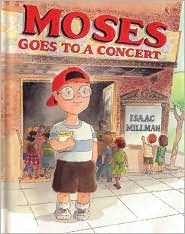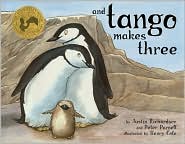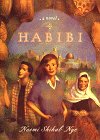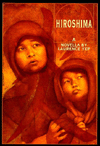 BIBLIOGRAPHY
BIBLIOGRAPHYMillman, Isaac. 2002. Moses Goes to a Concert. NY: Frances Foster Books (Farrar, Straus, and Girous. ISBN: 0374350671.
PLOT SUMMARY
When his teacher takes him and his fellow deaf classmates to a concert and to meet percussionist friend, Moses learns that when he puts his mind to it he can become anything when he grows up.
CRITICAL ANALYSIS
Moses Goes to a Concert is an excellent book depicting a main character and his friends who are all deaf. The narrative of the books is simple and clear. It is very much like any other picture books due to the fact that it does not explain in depth that the characters are deaf and the American Sign Language. The text simply states that Moses “can’t hear the sounds he is making [on a drum] because he is deaf” and that his classmates are also deaf. The text also seamlessly replaces the word “says” or “said” with “signs” or “signed.” It is also through the text, that readers will learn that despite being unable to hear, people who are deaf can feel music through the vibrations.
The watercolor illustrations are presented in double-page spreads and are colorful and clear. The clearness of the artwork especially when depicting the characters using American Sign Language (ASL) as not only are the movements of the hands and arms important in ASL but also the facial expressions. Another wonderful element of the illustrations is the portrayal of the Moses and his multicultural classmates. Each child has a different shaped face, hair color and styles that allows the readers to see that anyone can be deaf.
The unique element found in the book is the presence of actual ASL being used. Beyond the text, there are small box inserts in the illustrations that show Moses signing. At the beginning of the book in an Author’s Notes, Millman explains not only the deaf community, but also how to read the arrows and symbols that are used in the story. For each word that Moses signs the illustrations show the motions via arrows and symbols. The word being signed is also at the bottom of the illustration for the readers to recognize the word. There are also three double-page illustrations that show first the teacher’s friend, Ms Elwyn the percussionist who is also deaf, signing, and second Moses telling his parents about the concert he went to and how he can be anything he wants to be when he grows up.
The final element of the book is a visual ASL alphabet for readers to also learn from. Because Moses Goes to a Concert portrays characters who deaf having fund and doing things that everyone else does, this is an excellent choice for any public and school library.
REVIEWS
BOOKLIST
Ages 5-9. This breakthrough picture book about a deaf child works so well that you wonder why there aren’t lots more books like it. We do have nonfiction and bibliotherapy books about how use American Sign Language (ASL), but this is a good story told in pictures and written in English and also in ASL. Moses is deaf. When he plays on his drum, he can’t hear the sounds, but he can fell the vibrations through his hands and through his bare feet. When he goes with his deaf classmates to a concert, they hold balloons in their laps to feel the vibrations. The percussionist in the orchestra is also deaf (she wears no shoes so that she can feel the vibrations through her stockinged feet), and after he wild, and wonderful performance, she meets the deaf children, tells them her story (in ASL), and then allows them to try out all her instruments. With clear line-and-watercolor pictures, the precise hand shapes, movements, and facial expressions of ASL are a natural part of the story. Pictures at the bottom of the page show Moses signing in the words, but when the percussionist tells her story, and when Moses tells his parents about his great time at the concert, the sign language is the action, and the written words are the captions. Deaf children will welcome this joyful story that talks, without condescension, about the fun they have. Hearing kids, too, will want to learn some of the sign language, and with the help of an adult, they can practice the hand alphabet shown at the back of the book. (Reviewed April 15, 1998)0374350671Hazel Rochman.
SCHOOL LIBRARY JOURNAL
PreS-Gr 2A group of deaf children is taken to a concert where the youngsters meet the percussionist, a friend of their teacher, and learn to their surprise that she is also deaf. She explains to Moses and his class how she became a percussionist even though she had lost her hearing and helps them understand that anything is possible with hard work and determination. She lets the children play on her instruments and feel the vibrations on balloons that their teacher has given them. Cheerful watercolor illustrations show the multiethnic children enjoying themselves at the concert, while smaller cartoon strips feature Moses's additional comments in sign language. A page displaying the manual alphabet and a conversation in sign language in which Moses tells his parents about his day enhance the upbeat story.Sally R. Dow, Ossining Public Library, NY
CONNECTIONS
*Read Isaac Millman other books with Moses: Moses Goes to a Play, Moses Goes to School and Moses Goes to the Circus.




